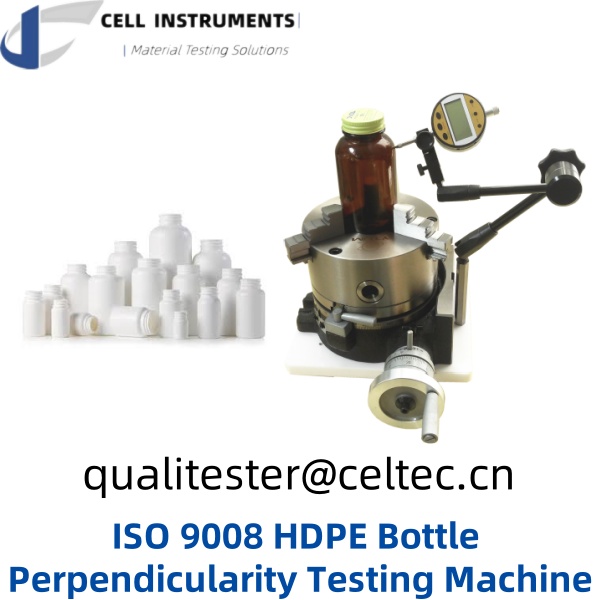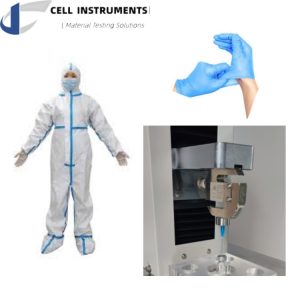HDPE Bottle Perpendicularity Test: Best Practices for ISO 9008 Certification
Ensuring the quality and integrity of HDPE (High-Density Polyethylene) bottles is crucial for industries like packaging, food and beverage, pharmaceuticals, and more. One critical aspect of this quality control process is the HDPE bottle perpendicularity test, which measures the deviation of a bottle’s vertical axis from its true perpendicular position. This article explores the best practices for conducting this test, aligning with ISO 9008 standards to ensure accuracy, consistency, and compliance.
Understanding the HDPE Bottle Perpendicularity Test
What is the HDPE Bottle Perpendicularity Test?
The HDPE bottle perpendicularity test is a quality control measure used to determine if a bottle stands perfectly upright. This test ensures that bottles are free from tilt, which can affect their stability and the integrity of the product inside.
Importance of Perpendicularity in Bottles
Perpendicularity is vital for several reasons:
- Stability: Ensures that bottles do not tip over easily.
- Seal Integrity: Prevents leaks by ensuring the cap fits properly.
- Packaging Efficiency: Facilitates efficient packing and transportation.
- Aesthetic Appeal: Maintains a uniform appearance on shelves.
Adhering to ISO 9008 Standards
Overview of ISO 9008
ISO 9008 is an international standard that specifies requirements for quality management systems. It focuses on ensuring products meet customer and regulatory requirements consistently. For the packaging industry, this means adhering to strict standards for materials and container integrity.
Compliance with ISO 9008 in Bottle Testing
Compliance with ISO 9008 involves:
- Accurate Measurements: Ensuring precise perpendicularity measurements.
- Consistent Testing Procedures: Following standardized testing methods.
- Documentation and Reporting: Keeping detailed records of test results.
Best Practices for HDPE Bottle Perpendicularity Testing
1. Proper Sample Preparation
- Cleanliness: Ensure bottles are clean and free from debris.
- Temperature Control: Conduct tests at a consistent room temperature to avoid material expansion or contraction.
2. Equipment Setup and Calibration
- Stable Surface: Position the tester on a stable, level surface.
- Calibration: Regularly calibrate the instrument to ensure accuracy.
3. Conducting the Test
- Positioning the Bottle: Secure the bottle in the tester, ensuring it is correctly aligned.
- Measurement Process: Activate the tester to measure the perpendicularity at multiple points.
- Data Collection: Record the results accurately.
4. Interpreting and Analyzing Results
- Deviation Tolerance: Define acceptable deviation limits based on ISO 9008 standards.
- Consistency Checks: Perform multiple tests to confirm consistency.
5. Regular Maintenance of Testing Equipment
- Routine Inspections: Check the tester for wear and tear.
- Cleaning: Keep the instrument clean to prevent measurement errors.
Recommended Equipment: Cell Instruments PER-01 Bottle Perpendicularity Tester
At Cell Instruments, we specialize in high-quality materials testing instruments. The PER-01 Bottle Perpendicularity Tester is designed to deliver precise measurements, ensuring compliance with ISO 9008 standards. Key features include:
- Adjustable Probe: Allows for easy and accurate alignment.
- Exceptional Precision: Provides highly accurate measurements.
- Consistent Rotation: Ensures uniform testing at various points.
- Data Export: Offers optional data export to PC Excel for enhanced data management.
FAQ
1. What is the purpose of the HDPE bottle perpendicularity test?
The test ensures that HDPE bottles stand upright without tilting, which is crucial for stability, seal integrity, and packaging efficiency.
2. How does the Cell Instruments PER-01 Tester ensure accuracy?
The PER-01 features an adjustable probe and consistent rotation, providing precise and uniform measurements.
3. What are the benefits of complying with ISO 9008 standards?
Compliance ensures product quality, customer satisfaction, regulatory adherence, and reduced risk of non-compliance issues.
4. How often should the testing equipment be calibrated?
Regular calibration is recommended, ideally before each testing session, to ensure accuracy.
5. Can the PER-01 Tester be customized for specific needs?
Yes, Cell Instruments offers customization options to meet unique testing requirements for different industries.
By following these best practices and utilizing advanced testing equipment like the Cell Instruments PER-01 Bottle Perpendicularity Tester, you can ensure that your HDPE bottles meet the highest quality standards, aligning with ISO 9008 and enhancing your product’s integrity and market appeal.
Related Products
Bottle Perpendicularity Testing Machine
Related Article
Bottle Perpendicularity Tester
Glass Bottle Perpendicularity Test
Preform Perpendicularity Tester
PET Bottle Perpendicularity Test


